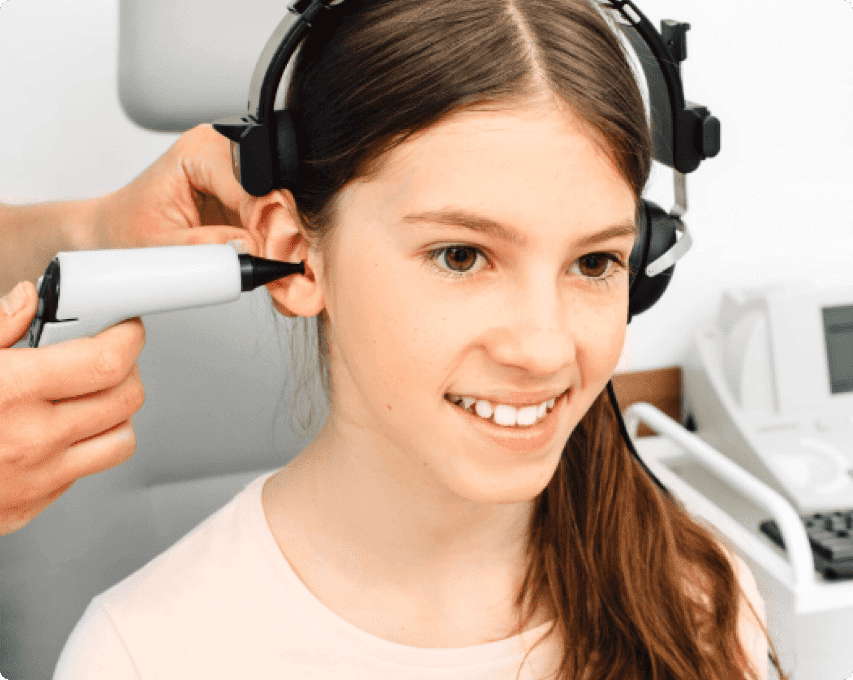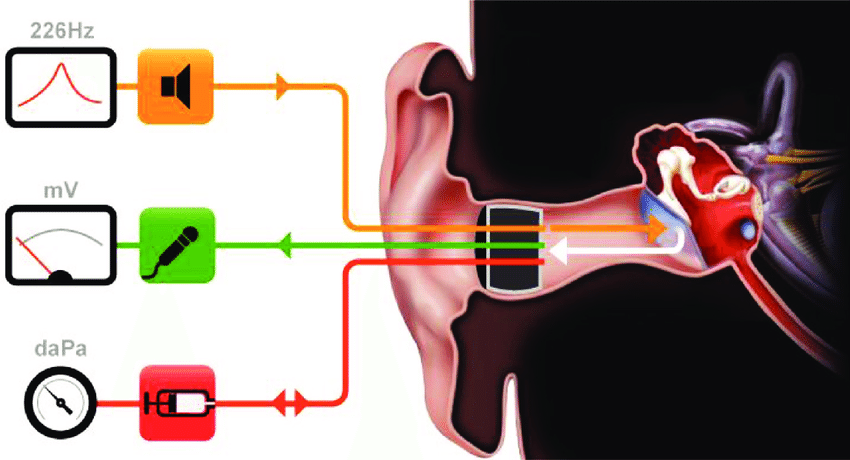Tympanometry
Understanding Tympanometry
Have you ever wondered how our ears work and what happens when they malfunction? Tympanometry, a specialized diagnostic tool used in audiology, holds the key to unlocking the mysteries of middle ear function. In this article, we will delve into the science of tympanometry, explore its various applications, and address frequently asked questions to help you gain a deeper understanding of this intriguing topic.

Tympanometry, also known as acoustic immittance testing, is a non-invasive procedure that measures the movement of the tympanic membrane or eardrum in response to changes in air pressure. It provides valuable information about the compliance or flexibility of the middle ear system, which includes the eardrum, ossicles (small bones in the middle ear), and the air-filled space behind the eardrum known as the middle ear cavity. By assessing the middle ear function, tympanometry helps in diagnosing conditions such as otitis media (middle ear infection), eustachian tube dysfunction, and other disorders that affect the transmission of sound from the outer to the inner ear.
How Does Tympanometry Work?

Tympanometry involves the use of a handheld device called a tympanometer, which generates a pure tone sound and measures the amount of sound that is reflected back from the eardrum. The test is typically performed by a trained audiologist or healthcare professional and is painless and quick, usually taking only a few minutes to complete.
During the test, a soft probe tip is placed in the ear canal, and the patient is instructed to hold their nose and swallow or yawn to open the eustachian tube and equalize the pressure in the middle ear cavity. The
tympanometer then applies varying degrees of air pressure to the ear canal, and the reflected sound is measured and plotted on a graph called a tympanogram.
The tympanogram provides important information about the compliance or movement of the eardrum at different air pressure levels. A normal tympanogram typically shows a peak at the midpoint of the graph, indicating that the eardrum is most compliant or flexible at that pressure level. Abnormal tympanograms may show reduced compliance, indicating stiffness or reduced movement of the eardrum, or a flat tympanogram, indicating that the eardrum is not moving at all. These patterns of compliance can provide valuable clues about the status of the middle ear function and help in diagnosing various middle ear disorders.
Applications of Tympanometry

Tympanometry has a wide range of applications in audiology and other related fields. Here are some key areas where tympanometry plays a crucial role:
1. Diagnosis of Middle Ear Disorders: Tympanometry is commonly used to diagnose middle ear disorders, such as otitis media, which is a common childhood ear infection. It helps in determining the presence and severity of middle ear effusion (fluid) and assessing the mobility of the eardrum, which can be reduced in cases of middle ear infections.
2. Assessment of Eustachian Tube Function: The eustachian tube is a narrow tube that connects the middle ear cavity to the back of the throat and helps in equalizing the pressure in the middle ear. Tympanometry can be used to assess the opening and closing function of the eustachian tube by measuring the changes in middle ear pressure during swallowing or yawning. This can be helpful in diagnosing conditions such as eustachian tube dysfunction, which can cause symptoms such as ear pain, muffled hearing, and recurrent middle ear infections.
3. Monitoring Middle Ear Function during Tympanoplasty Surgery: Tympanoplasty is a surgical procedure that aims to repair a perforated eardrum or reconstruct the ossicles in the middle ear. Tympanometry can be used before, during, and after the surgery to assess the function of the middle ear and monitor the success of the surgical repair.
4. Screening for Hearing Loss: Tympanometry can also be used as a screening tool to detect hearing loss in infants, children, and adults. Abnormal tympanograms can indicate the presence of middle ear disorders that may affect hearing function and require further evaluation.
5. Monitoring the Efficacy of Treatment: Tympanometry can be used to monitor the effectiveness of treatment interventions for middle ear disorders, such as medical management of otitis media or insertion of middle ear ventilation tubes. Follow-up tympanograms can provide valuable information about the progress of the treatment and help in making decisions about further management.
FAQs about Tympanometry
No, tympanometry is a non-invasive and painless procedure. The probe tip used in tympanometry is soft and does not cause discomfort to the ear canal or the eardrum.
Yes, tympanometry can be performed on infants as young as a few weeks old and on children of all ages. It is a valuable tool in diagnosing middle ear disorders in pediatric populations.
A tympanometry test usually takes only a few minutes to complete. It is a quick and efficient procedure that can be done in a clinical setting.
Abnormal tympanograms can indicate various middle ear disorders, such as otitis media, eustachian tube dysfunction, tympanic membrane perforation, or middle ear tumors. Further evaluation and follow-up may be needed to determine the exact cause of the abnormal findings.
Tympanometry is a safe and non-invasive procedure with minimal risks. In some cases, the probe tip may cause mild discomfort or tickling sensation in the ear canal, but this is usually temporary and well-tolerated.
No, tympanometry is not a test for measuring hearing thresholds. It is used as a complementary test to assess middle ear function and provide information about the compliance of the eardrum. Pure-tone audiometry, which measures hearing thresholds, is typically performed along with tympanometry to obtain a comprehensive evaluation of hearing function.
Yes, tympanometry can still be performed even if you have a history of ear infections or ear surgery. However, it is important to inform the audiologist or healthcare professional about your medical history before the test, as it may affect the interpretation of the results.
